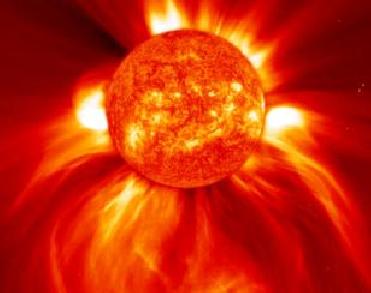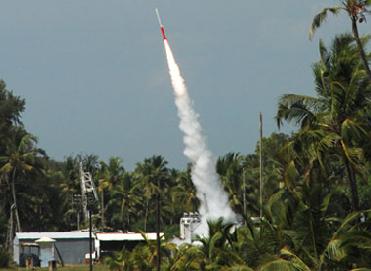
Coronal Mass Ejection (CME) composite pic .Credit NASA photo
MUMBAI (PTI): After lying dormant for a few months, the Sun is once again witnessing revival of Coronal Mass Ejection (CME) activities since May 5, which will help in determining the beginning of a new 11-year-solar cycle.
Sun produced an impressive coronal mass ejection (CME) and a burst of radio emissions, signalling the passage of a shock wave through its outer atmosphere, says NASA.
NASA's STEREO-B spacecraft is monitoring an active region hidden behind the Sun's Eastern limb since the big star was spotless for the last few months.
"The activity continued apace on May 6, with at least two more eruptions. The blast site is not yet visible from Earth, but the sun is turning the region toward us for a better view... May be on May 7 and 8," NASA said.
Welcoming this renewed activity, after remaining "silent" (without Sun spots) for a period of at least six months, astronomers of Tata Institute of Fundamental Research (TIFR) said, "With the advent of activity, we will be able to get new clues on the delay and also the beginning of a new 11-year-solar cycle, which is due this year."
Besides, the shock front propagating or moving away from the Sun will also provide clues to the interplanetary medium, Mayank Vahia of TIFR said.
 Previous Article
Previous Article Next Article
Next Article












The Indian Air Force, in its flight trials evaluation report submitted before the Defence Ministry l..
view articleAn insight into the Medium Multi-Role Combat Aircraft competition...
view articleSky enthusiasts can now spot the International Space Station (ISS) commanded by Indian-American astr..
view article